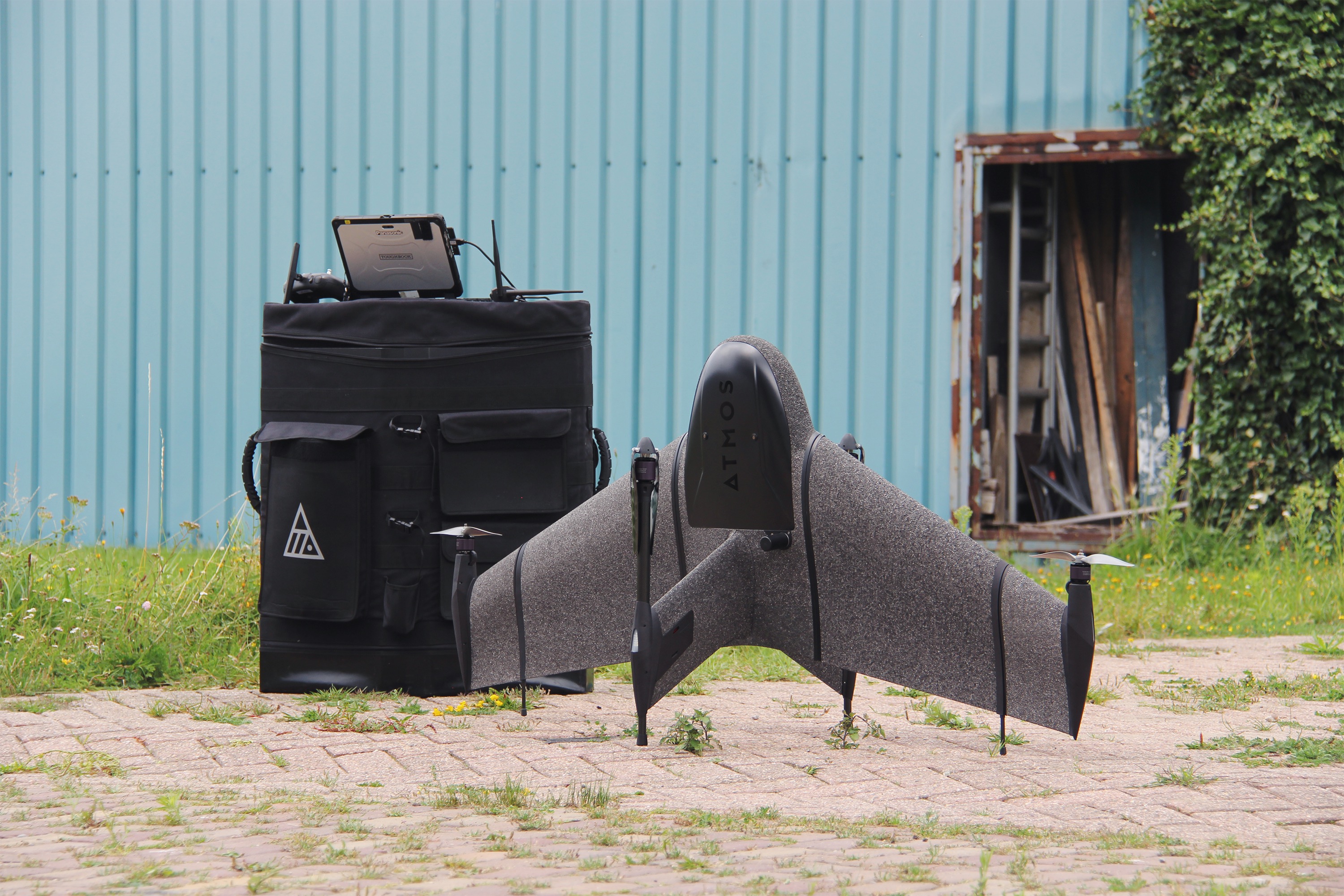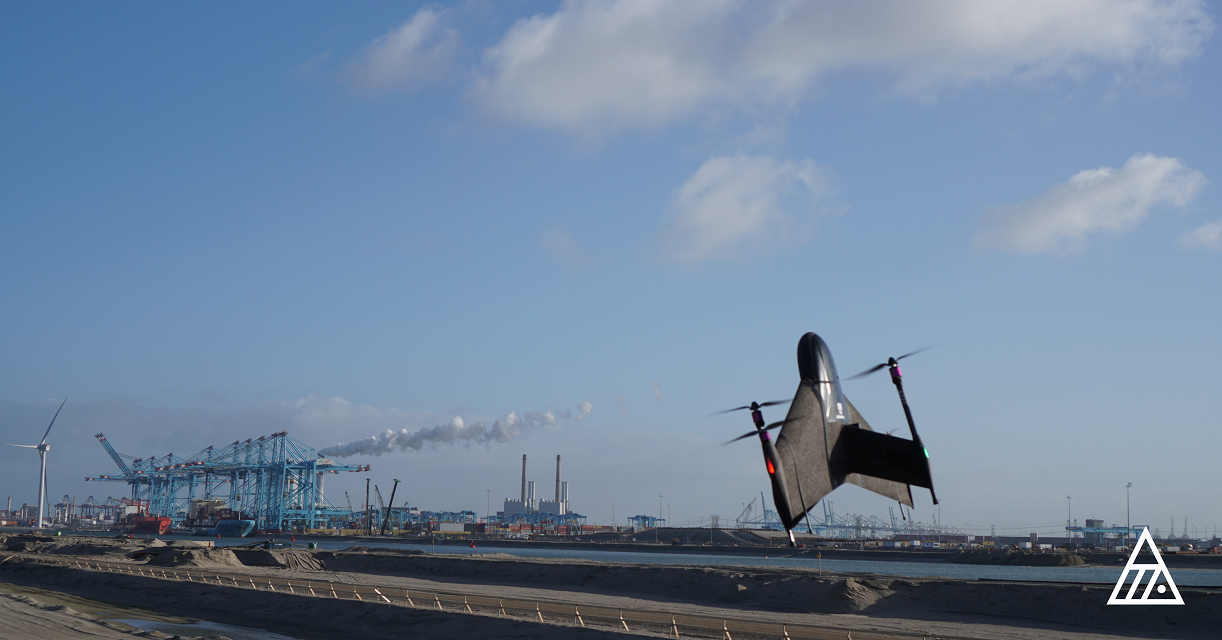Dutch drone designer and producer Atmos announced a technical arrangement with Topcon Positioning Group for the supply of Topcon high-end GNSS boards for the Atmos Marlyn Cobalt drone. As a provider in the global construction, geospatial and agriculture markets, Topcon has developed and optimized GNSS boards for highly precise positioning applications.
Introducing the first fully autonomous hybrid drone
The Atmos Marlyn Cobalt is a VTOL fixed-wing mapping drone that allows users to effortlessly collect accurate geospatial information and turn it into actionable insights with great effectiveness. Marlyn is the first fully autonomous hybrid (VTOL & Fixed-wing) drone for mapping and surveying, that can take-off vertically from anywhere, and map fast and efficiently, even in harsh and windy conditions.

The Atmos Marlyn can collect both RGB and multispectral imagery using cameras produced by Sony and Micasense. The drone takes overlapping photos of an area with its onboard camera, with each image having a precise geotag of its x, y, z, position. The images and GPS data are downloaded from the drone, and photogrammetry software like Pix4D or Metashape can then compare each image and calculate unique features within each image (known as tie points), which are then put together into a point cloud. After this, more data driven insights and models can be generated depending on the project requirements. The advantage of using a camera and photogrammetry, is that additional information can be obtained by analyzing the raw images, such as certain hazards on a worksite.
Integrating Topcon’s B11A GNSS board
In order to provide precise positioning accuracy in surveying and GIS applications, a GNSS board needs to compensate for inaccuracies caused by satellite constellations, receiver hardware, and atmospheric conditions. Additionally, with the use of Topnet Live (Topcon’s GNSS real-time correction service) a flexible subscription-based solution is available to further meet the unique requirements of users by offering high-accuracy positioning and survey-grade results to professionals through a 24/7 cross-border, consistent, and reliable access. This combination removes the need of base stations.
The Topcon B111A board is located in the Atmos Marlyn drone and is used together with an attitude and heading reference system (AHRS) to estimate the position of the camera entrance pupil with centimeter-level accuracy. The raw GNSS observations are recorded, after which Topcon’s post-processing engine is used to obtain an accurate and reliable position solution.
Topcon’s ultra-compact B111A GNSS receiver board can provide scalable positioning from sub-meter DGPS to sub-centimeter RTK positioning. The board’s flexible design make it easy to integrate the B111A into any precise positioning application. Thanks to this collaboration with Topcon, Atmos is able to offer our customers the advantages of Galileo, QZSS and Beidou on top of GLONASS and GPS, at no additional cost.
However, integrating a high accuracy GNSS receiver in a small unmanned aircraft comes with many challenges and compromises. The antenna can’t always be placed at the most ideal location signal-quality wise, due to for example RF or structural limitations. Atmos’ engineering team was capable of identifying the best solution while ensuring high positional accuracy.
Furthermore, the Atmos Marlyn is often used in environments challenging for GNSS, for example when multi-path, external RF disturbances, and attenuation by vegetation are encountered. With the Topcon B111A, the Atmos Marlyn can use all five constellations, so that a good position solution can be computed even in the most challenging conditions.






